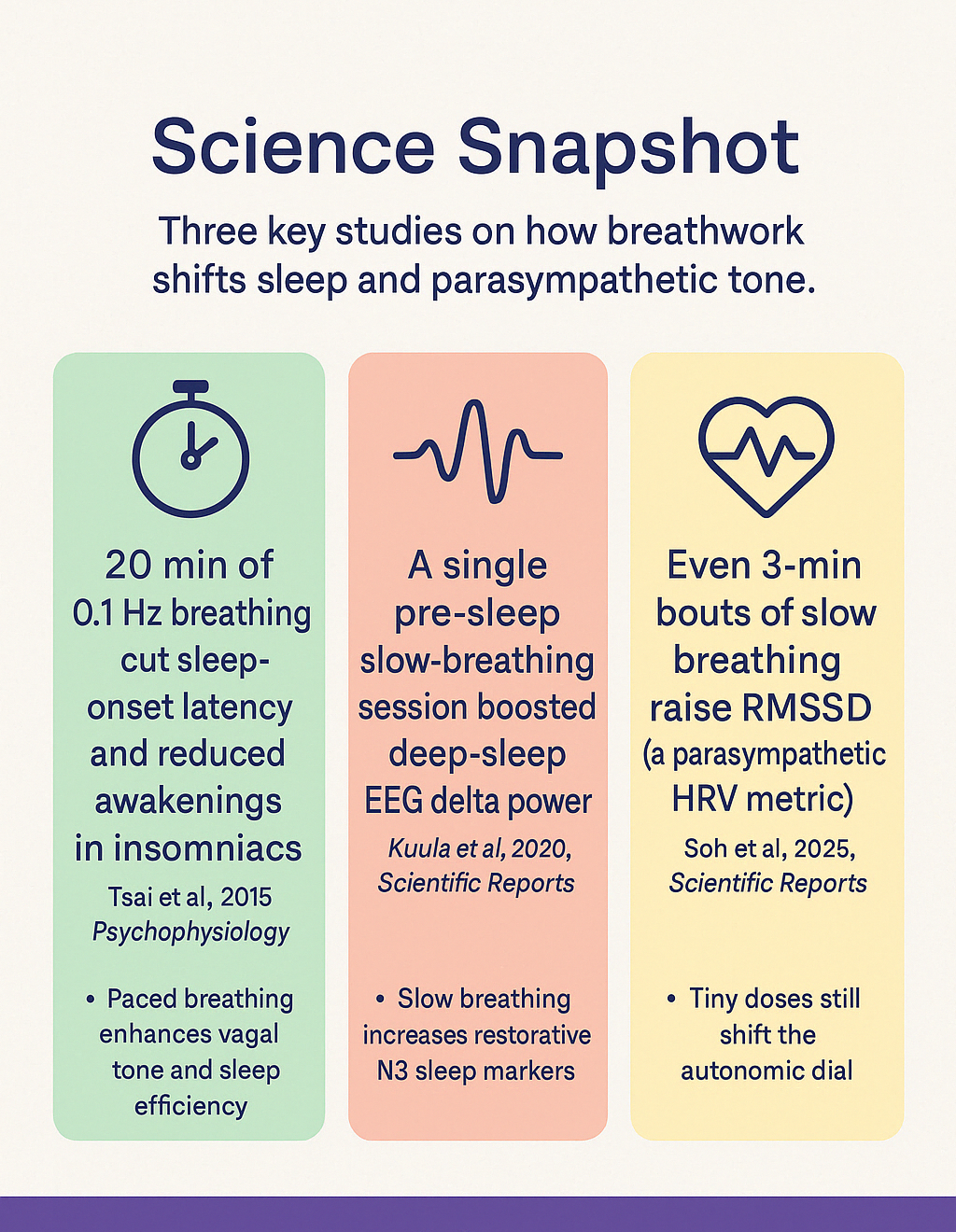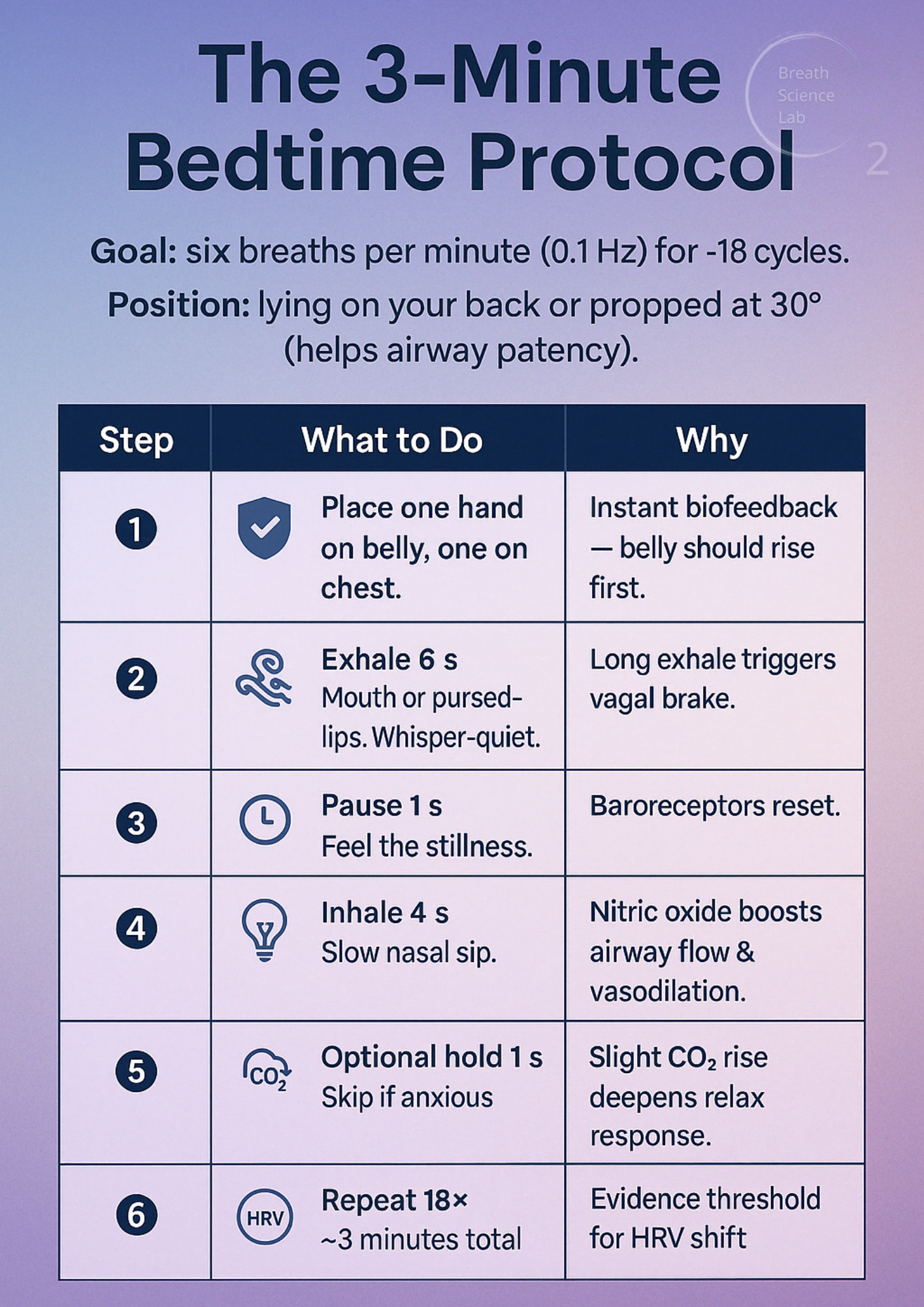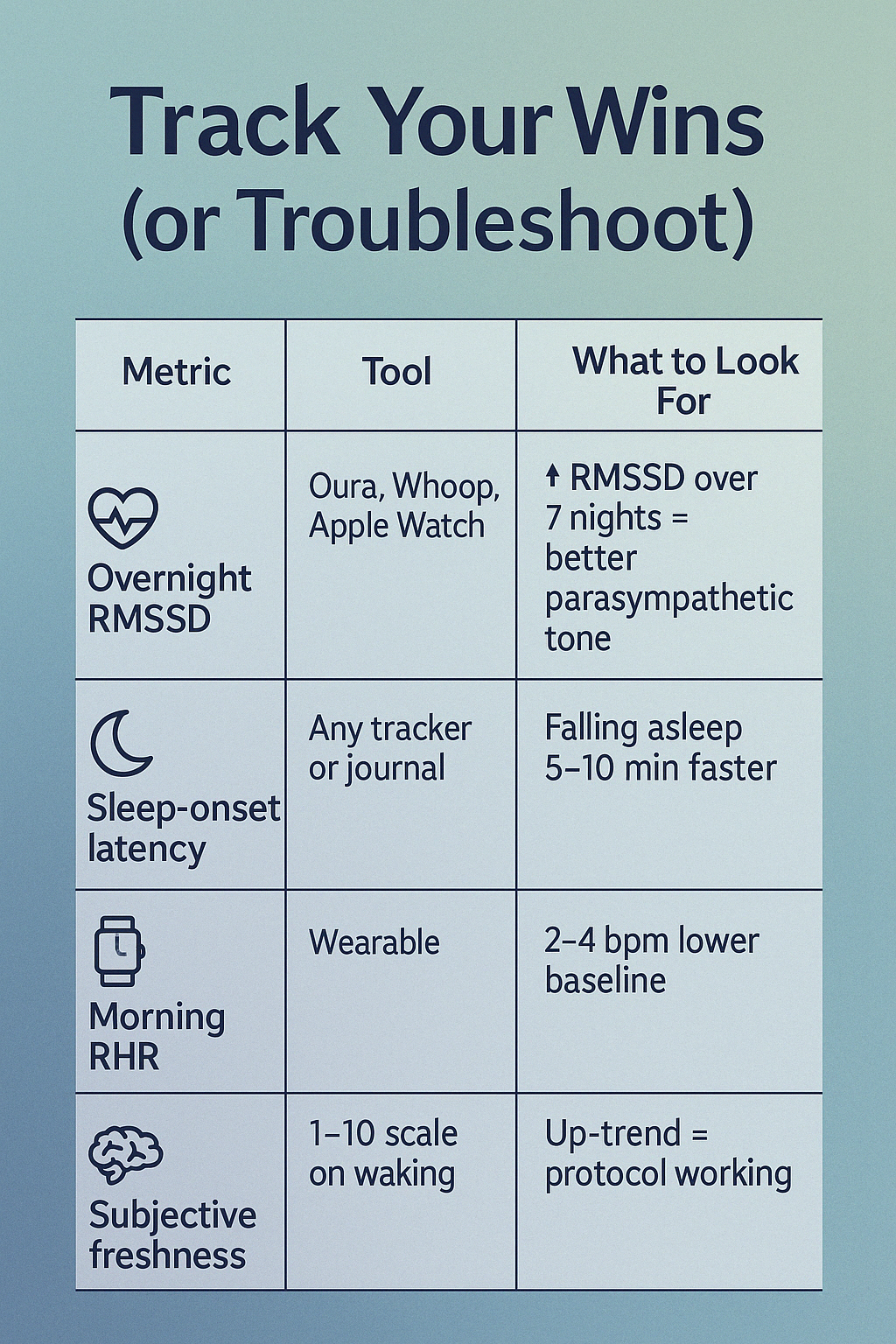How to Breathe for Deep Sleep
Use this 3-minute parasympathetic breathing technique to fall asleep faster and improve deep sleep. Backed by HRV and vagus nerve science.

The 3‑Minute Parasympathetic Reset You Can Do Right in Bed
Struggling to fall asleep? This 3-minute bedtime breathing protocol is designed to activate your parasympathetic nervous system, calm the body, and support deep, restorative sleep. It's science-backed, trauma-informed, and wearable-friendly — making it easy to use any night you need it.
Why This Matters
When your head hits the pillow but your mind keeps sprinting, the culprit is usually a sympathetic‑dominant nervous system. Slow, deliberate breathing is the fastest manual override: every exhale nudges your vagus nerve, drops heart rate, and invites the parasympathetic “rest‑and‑repair” branch to take over.
Science snapshot
Curious about why paced breathing really works? Below is a quick science snapshot of three landmark studies showing how just minutes of slow, 0.1 Hz breathing can cut sleep‑onset time, boost deep‑sleep EEG markers, and shift your parasympathetic (rest‑and‑repair) dial. Use these insights to reinforce your practice and stay motivated!

(See “References” at the end for full list.)
Bedtime Protocol - The 3‑Minute Parasympathetic Reset
Goal: six breaths per minute (0.1 Hz) for ~18 cycles.
Position: lying on your back or propped at 30° (helps airway patency).

Trauma‑safe tweaks
- If chest feels tight: shorten the inhale to 3 s, keep the 1‑s pause, and maintain the long 6‑s exhale → 3‑1‑6. A shorter inhale (or dropping the hold) prevents that “over‑full” chest sensation, while the extended exhale preserves the vagal‑brake effect.
- Hum softly on each exhale to add vagus stimulation without breath holds.
- Keep eyes softly open if full darkness feels unsafe (gaze at the ceiling, not screens).
Track Your Wins (or Troubleshoot)
After you’ve completed the 3‑Minute Bedtime Protocol for a few nights, it’s time to see what’s really changing. Tracking a handful of key metrics each morning will tell you whether your nervous system is shifting into a more relaxed, parasympathetic state—or if you need to tweak your routine.
Use the table below to log your overnight HRV (RMSSD), sleep‑onset latency, resting heart rate, and how fresh you actually feel on waking. Over time, you’ll spot patterns that let you celebrate real wins—and troubleshoot any sticking points along the way.

If dizziness, racing thoughts, or tingling surfaces, bail out and switch to the Breathwork Readiness Checklist steps instead.
Integrated Recovery Stack
- The 3‑Minute Parasympathetic Reset — this protocol
- When Breathwork Backfires — what to do if anything feels edgy
- Breathwork for Recovery — apply the same principles on workout days
- Why Your Nervous System Isn’t Recovering — HRV deep‑dive & root‑cause fixes
- Morning CO₂ Build‑Up — coming soon • join the wait‑list to get it first
Grab the Bedside Card
Download a printable one‑pager so you can breathe, and drift off.
Free for subscribers — get it now.
References
- Tsai H‑J, Kuo T‑B, Lee G‑S, Yang C‑C‑H. Efficacy of paced breathing for insomnia: enhances vagal activity and improves sleep quality.
- Kuula L et al. The effects of presleep slow breathing and music listening on polysomnographic sleep measures – a pilot trial.
- Soh Y et al. The effect of slow breathing in regulating anxiety

